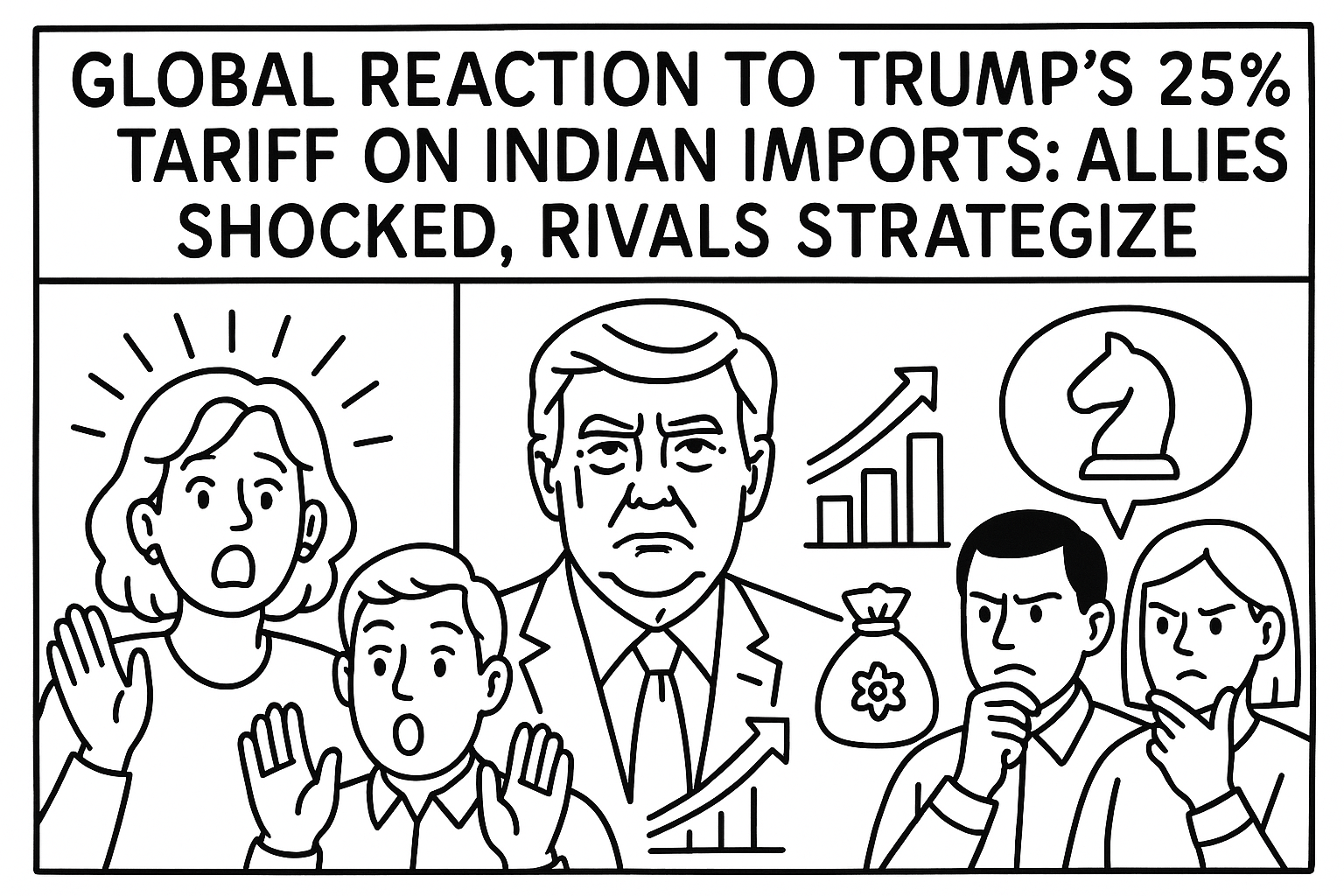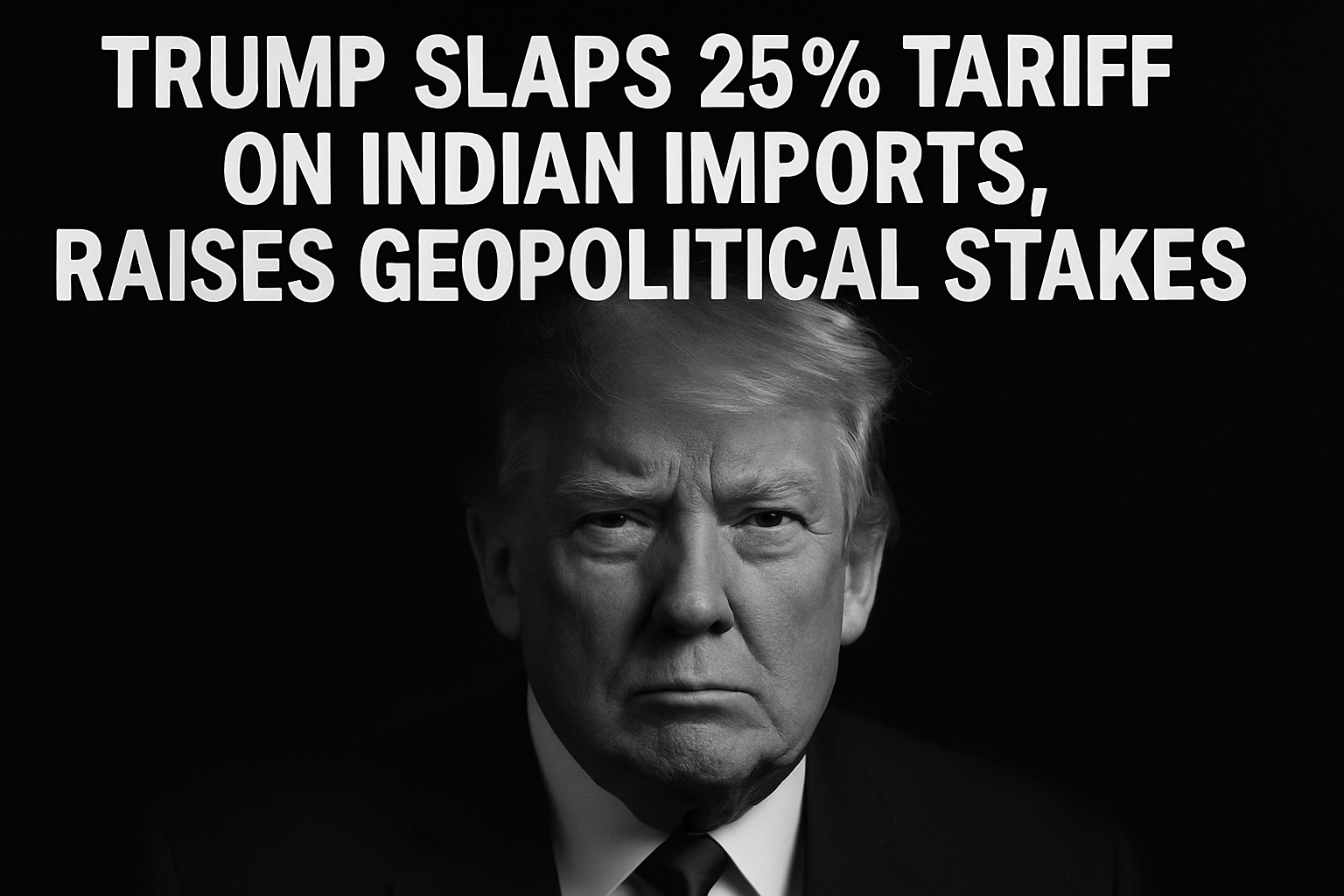As U.S. President Donald Trump enforces a sweeping 25% tariff on Indian imports from August 1, 2025, global responses have ranged from diplomatic alarm to strategic recalibration. This article examines what Europe, BRICS allies, ASEAN, and other key players think about this move—and why it matters.
WHO: Key International Players React
United States: The Trump administration defends the tariff as a necessary response to India’s high trade barriers and strategic alignment with Russia. Treasury Secretary Scott Bessent labeled India “not a great global actor,” framing the tariff as leverage to accelerate trade negotiations.
India: Commerce Minister Piyush Goyal called the move an act of coercion and reaffirmed India’s refusal to succumb to strategic pressure. Indian industry leaders argue the U.S. may suffer more in pharmaceuticals and software services.
European Union: Spanish Prime Minister Pedro Sánchez condemned the tariffs as “an unprecedented unilateral assault on global trade order.” Switzerland emphasized its continued loyalty to WTO norms.
China & BRICS: China sees the move as a strategic error. Analysts from the Lowy Institute suggest the tariffs may push India closer to BRICS and China, strengthening South-South cooperation.
ASEAN & Australia: Australia warned that Trump’s approach undermines traditional alliances. Export-dependent economies in ASEAN expressed concern over supply chain disruptions and retaliatory possibilities.
Canada & Taiwan: Canada condemned the move as “tact-less turbulence.” Taiwan labeled the tariffs “deeply unreasonable” and is seeking negotiations to reduce the damage.
Cambodia & Thailand: These countries celebrated the move as a trade opportunity, forecasting increased export competitiveness to the U.S. amid India’s market loss.
WHAT: Global Concerns and Opportunities
The 25% tariff is seen not just as a U.S.-India dispute, but as a realignment of global trade dynamics. Allies fear that U.S. unilateralism could weaken the multilateral trading system. Rivals interpret it as a signal to deepen ties with India or step into the vacuum.
Key Reactions by Category:
- Condemnation: Europe, Canada, and Australia fear economic fragmentation.
- Strategic Warnings: BRICS and China predict that the U.S. may be isolating itself.
- Diplomatic Appeals: Taiwan and ASEAN urge for talks and tariff exemptions.
- Market Opportunism: Cambodia and Thailand look to expand exports to the U.S.
WHEN: Timeline of Global Response
- July 30, 2025: Trump announces 25% tariff on Indian imports.
- July 31, 2025: Federal hearings begin on legal challenges to Liberation Day tariffs.
- August 1, 2025: Tariffs officially come into effect.
- Early August: European leaders issue formal WTO complaint; BRICS issues joint statement.
WHERE: Geographic Impact Beyond India
- Europe: Worry that similar tariffs may hit France, Germany, or Italy next.
- BRICS (Brazil, Russia, China, South Africa): Strategize on how to use India’s strained U.S. ties to advance BRICS agenda.
- ASEAN: Thailand and Vietnam rush to capture garment and electronics contracts lost by Indian firms.
- North America: Canada and Mexico fear crossfire tariffs due to interconnected supply chains.
WHY: Underlying Global Tensions
Trump’s tariff move is more than economic. It signals a shift toward weaponizing trade as a geopolitical tool. The reasons:
- Russia Ties: India’s continued purchase of Russian oil.
- BRICS Alignment: India's growing role in non-Western coalitions.
- Trade Imbalance: U.S. frustration over India’s high tariffs and subsidies.
European and Asian observers worry this could mark the end of post-WTO consensus, with countries bypassing multilateral resolution in favor of power politics.
HOW: The World Plans to Respond
Europe: Preparing a coordinated WTO legal challenge.
China & BRICS: Using the moment to draw India deeper into the Global South economic orbit.
ASEAN & Smaller Nations: Lobbying the U.S. for bilateral deals or exemptions.
India: Strengthening export markets in the EU, UAE, and ASEAN while pursuing domestic production incentives.
Public Mobilization: Business groups in India and the U.S. are lobbying to de-escalate tensions.
Conclusion: A Tariff That Echoes Globally
The U.S. tariff on Indian imports has triggered a chorus of concern, criticism, and calculation worldwide. As countries weigh in, the global trade architecture faces its latest stress test. Whether this results in lasting damage or a rebalanced system depends on what follows—a deal, a dispute, or deeper division.



